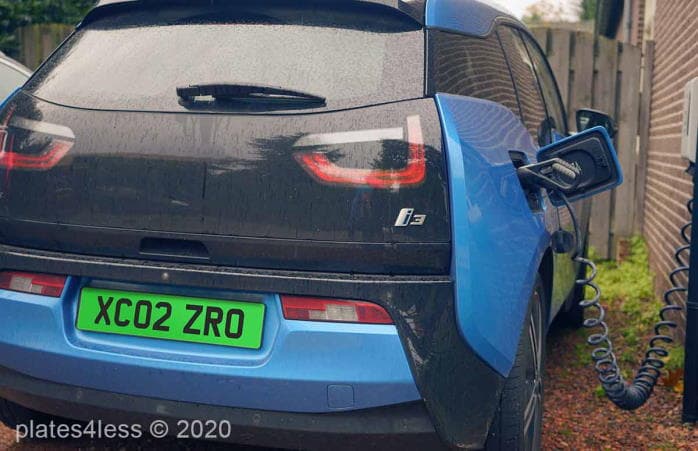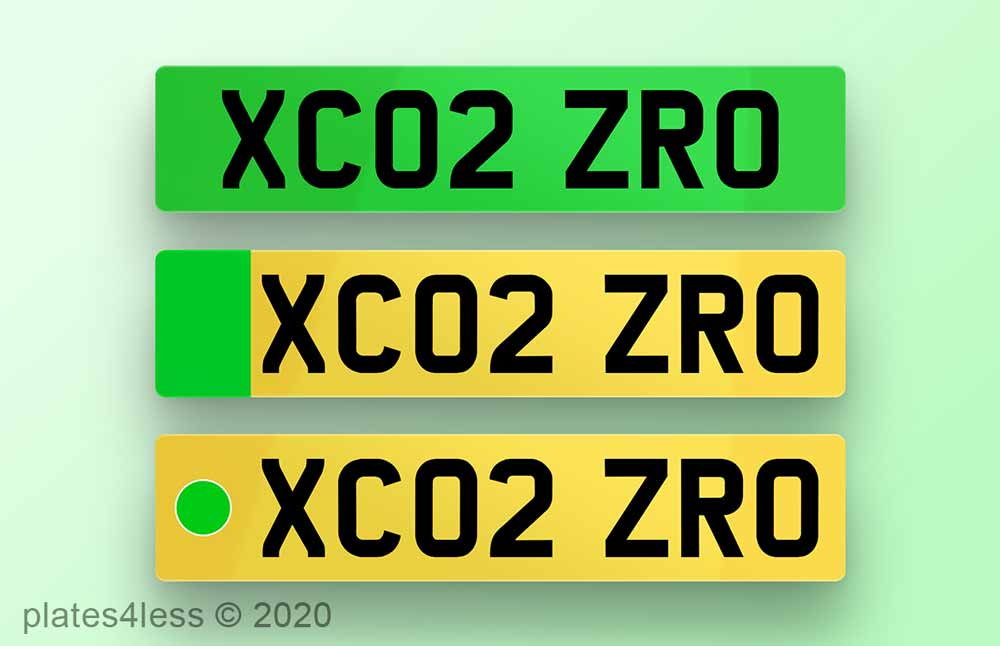Will green plates get the go ahead?

Recent developments, however, have given us ultra-low-emission vehicles (or ULEVs) which produce far less pollution. In order to highlight the number of ULEVs on our roads, and to raise awareness of these environmentally friendly vehicles, the Department for Transport has proposed the use of green number plates. What’s more, these green plates would come with incentives such as qualifying for reduced parking rates, and the benefit of using bus lanes, all in an effort to encourage people to switch to green.
There are three designs that have been proposed for the new plates, ranging from a green stripe on one side, or a green dot, to an entirely green-coloured plate, though whether it will be the front or back or both plates getting the green treatment is unknown at this stage.

Whatever the design, it would make for quite a striking visual difference on the roads, as the only other acceptable variation of plate colour are the older black and silver plates issued prior to 1969. Since then, number plates became the reflective white and yellow plates we have today, the white on the front of the vehicle and the yellow on the rear, with no decoration permitted apart from a flag representing either Wales, Scotland, England, or the Euro.

The green plate proposal took its inspiration from Canada, while a comparable scheme is already being used successfully in certain parts of Europe. In Hungary, for example, drivers with hybrids and electric vehicles can park for free in Budapest. However, concerns have been raised regarding the way green plates might impact on our Automatic Number Plate Recognition (or ANPR) systems in the UK.
The Surveillance Camera Commissioner voiced concern at how monitoring the green plate incentives would demand “an unqualified extension to the role of ANPR”, and while supporting the drive to reduce emissions and encourage the use of cleaner vehicles, noted that the green plate proposal stretched the ANPR system’s legitimacy in going beyond its initial purpose. At the moment, ANPR already monitors for a variety motoring offences and is used to enforce congestion charges. Somewhat controversially, they are also used by private parking companies who purchase driver details from the DVLA in order to issue fines. Monitoring green plates as well may be one thing too many for ANPR, particularly as the Department for Transport has argued there is little evidence of demand for such plates in the first place.
If green does get the go ahead, it’s hoped the new plates and associated benefits will boost the sales of cleaner vehicles and so reduce our contribution to air pollution. Already, the number of zero- emission vehicles on our roads has doubled since 2018. As promising a development as this is, though, such sales still only account for 2% of new car registrations. That this will change is inevitable, considering new petrol and diesel vehicles are due to be banned from 2040, but until then people need encouragement to go green. These new plates are part of that encouragement.
Of course, there will be those seeking to abuse the system, displaying green plates on vehicles that don’t qualify for their use, and number plate cloning is already prevalent across the UK. To combat the potential for misrepresentation, the issuing of green plates would have to be closely monitored and tightly controlled.
There’s also the obvious issue of needing to cut the benefits of such plates once a certain number are in circulation in order to minimise the financial loses of reduced parking fees and road taxes, and to ensure that privileges such as the use of bus lanes don’t result in additional congestion issues as everyone switches over. Perhaps the government can reinstate the grant once offered to those buying hybrids, or offer other attractive incentives when purchasing an environmentally-friendly vehicle. But until then, maybe we should give the green light to green plates.
Latest articles

The Rise of the Hyper Plate
View article
New Government Number Plate Proposals Risk Fueling Illegal supply
View article
Private Number Plates: The Perfect Christmas Gift
View article